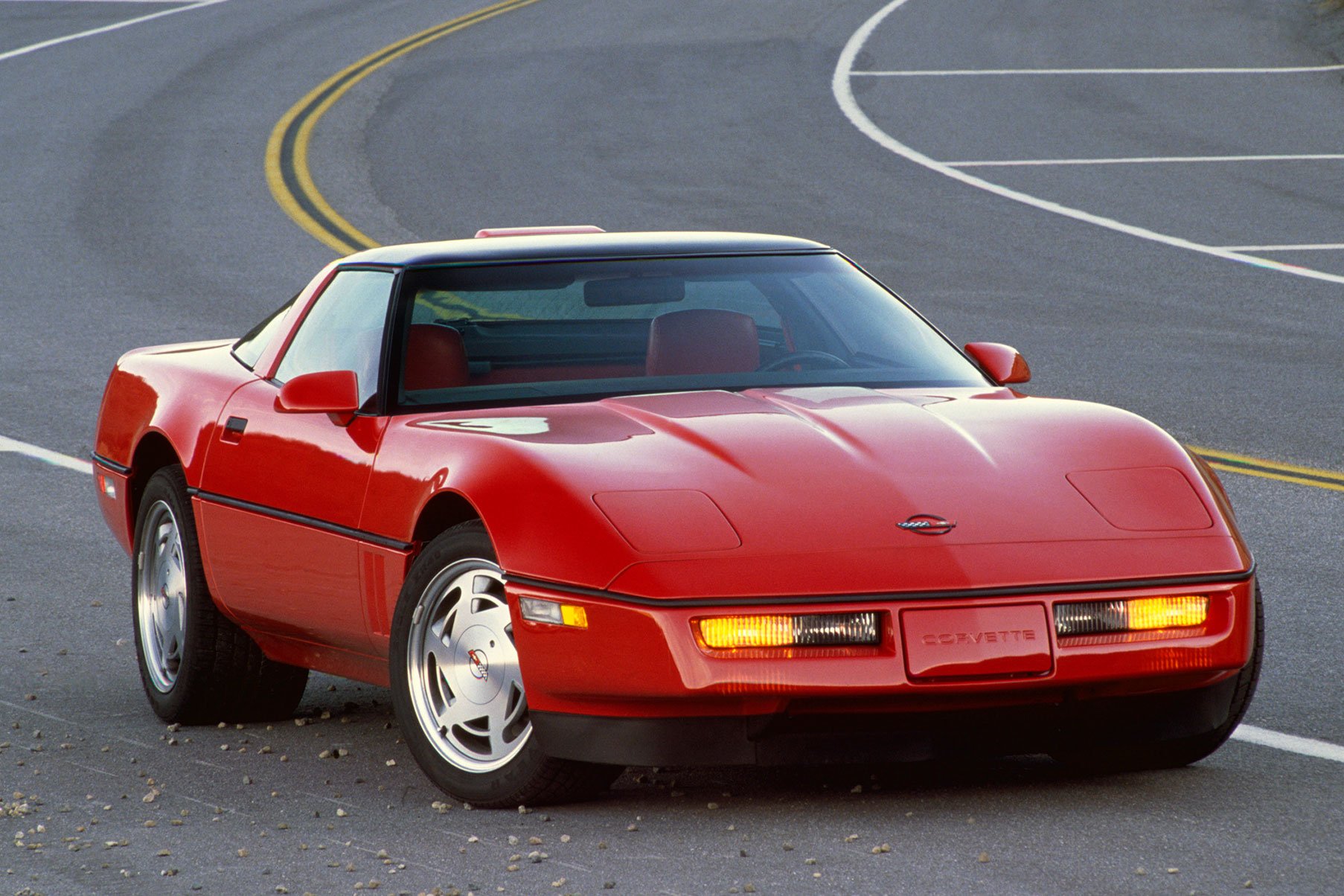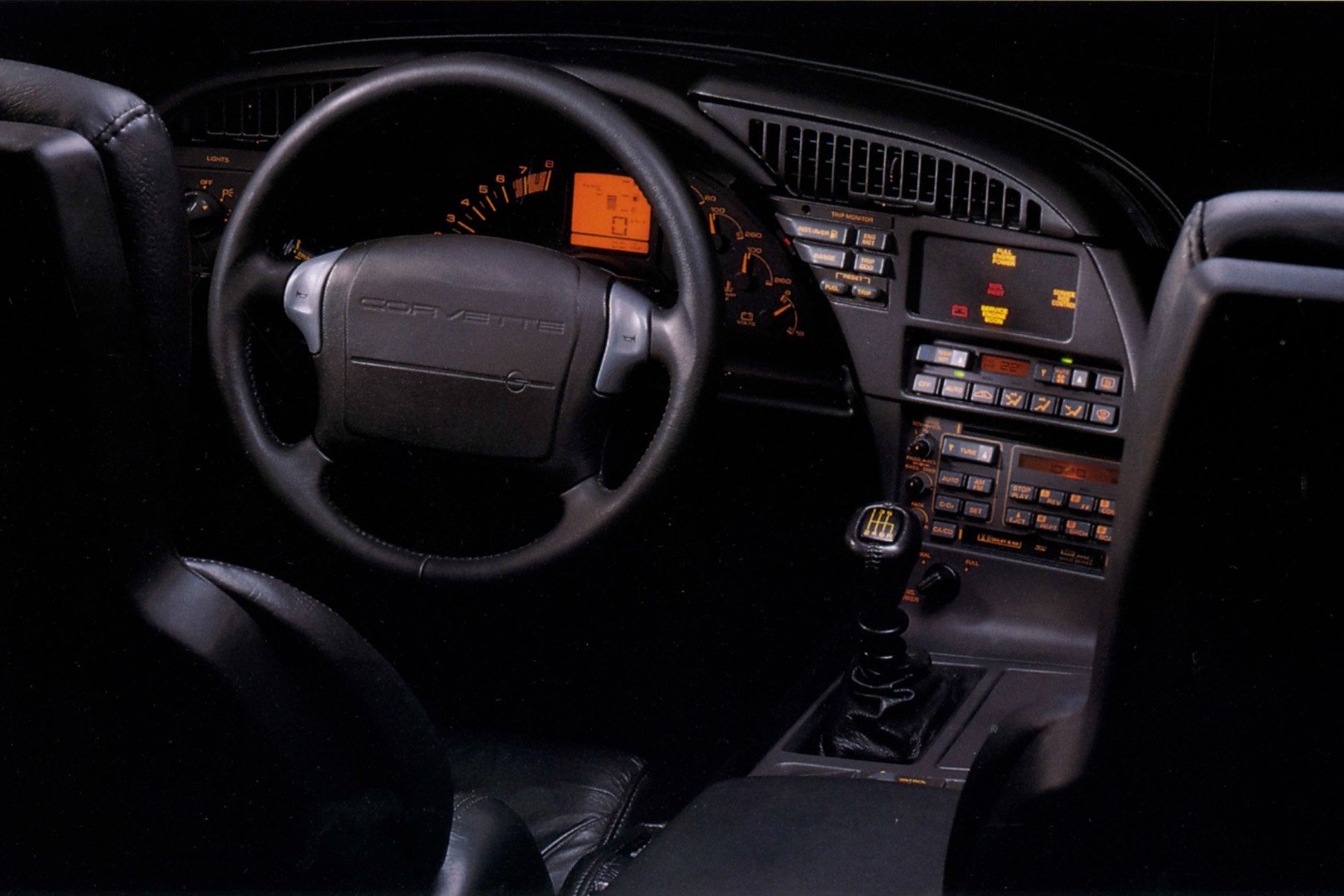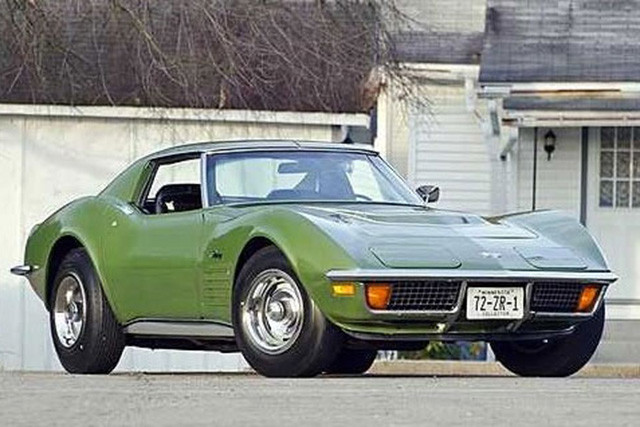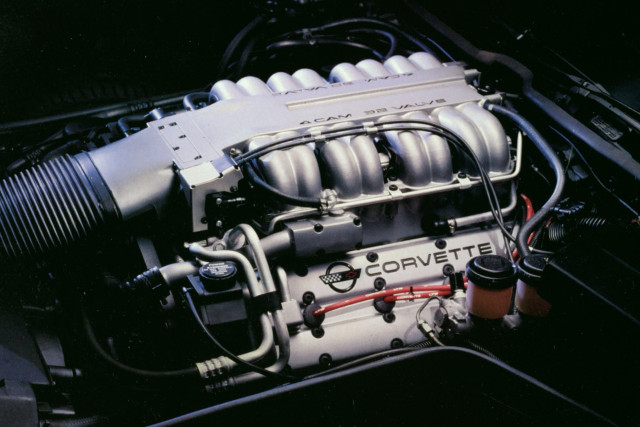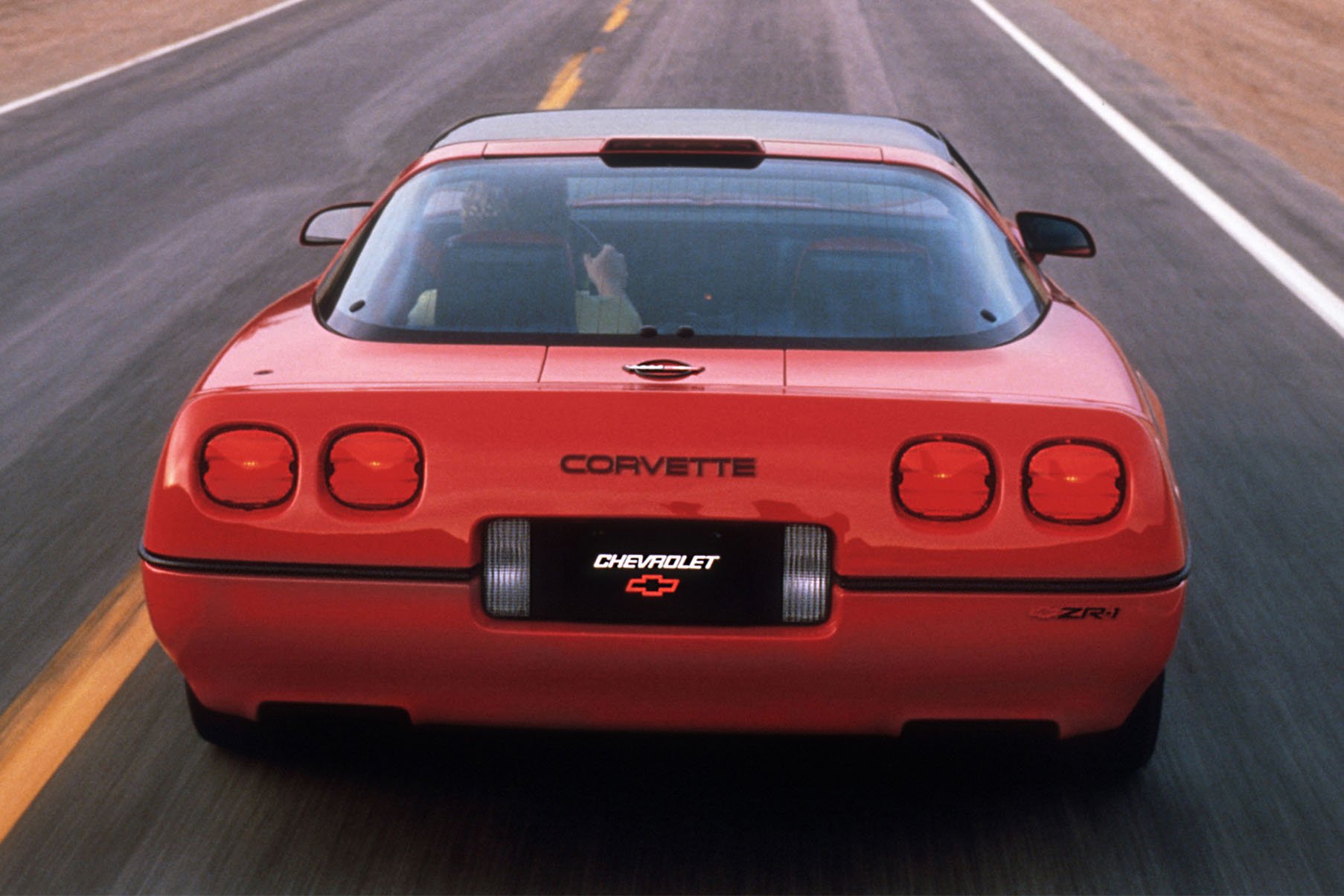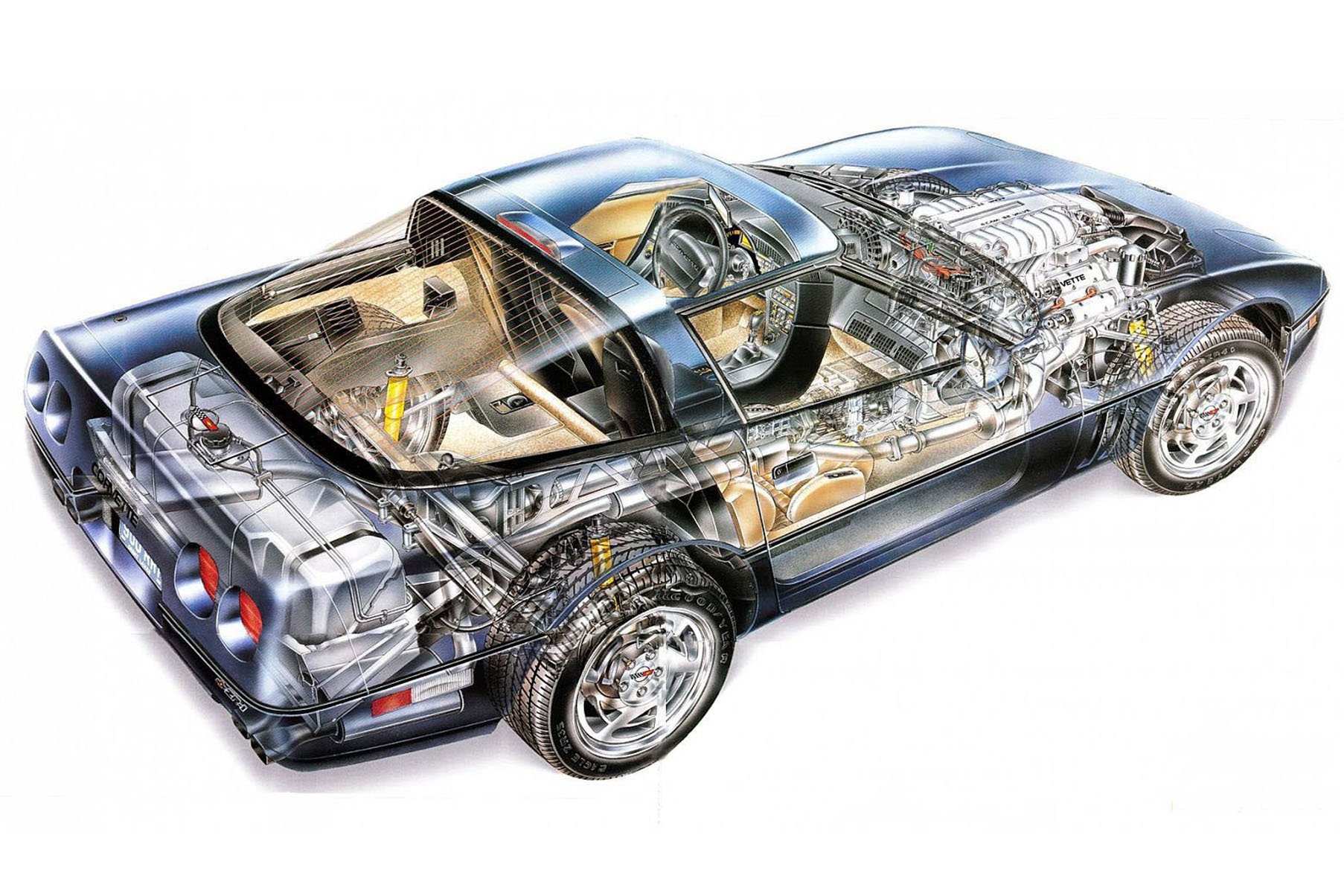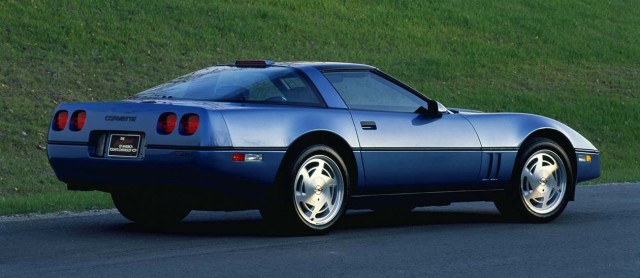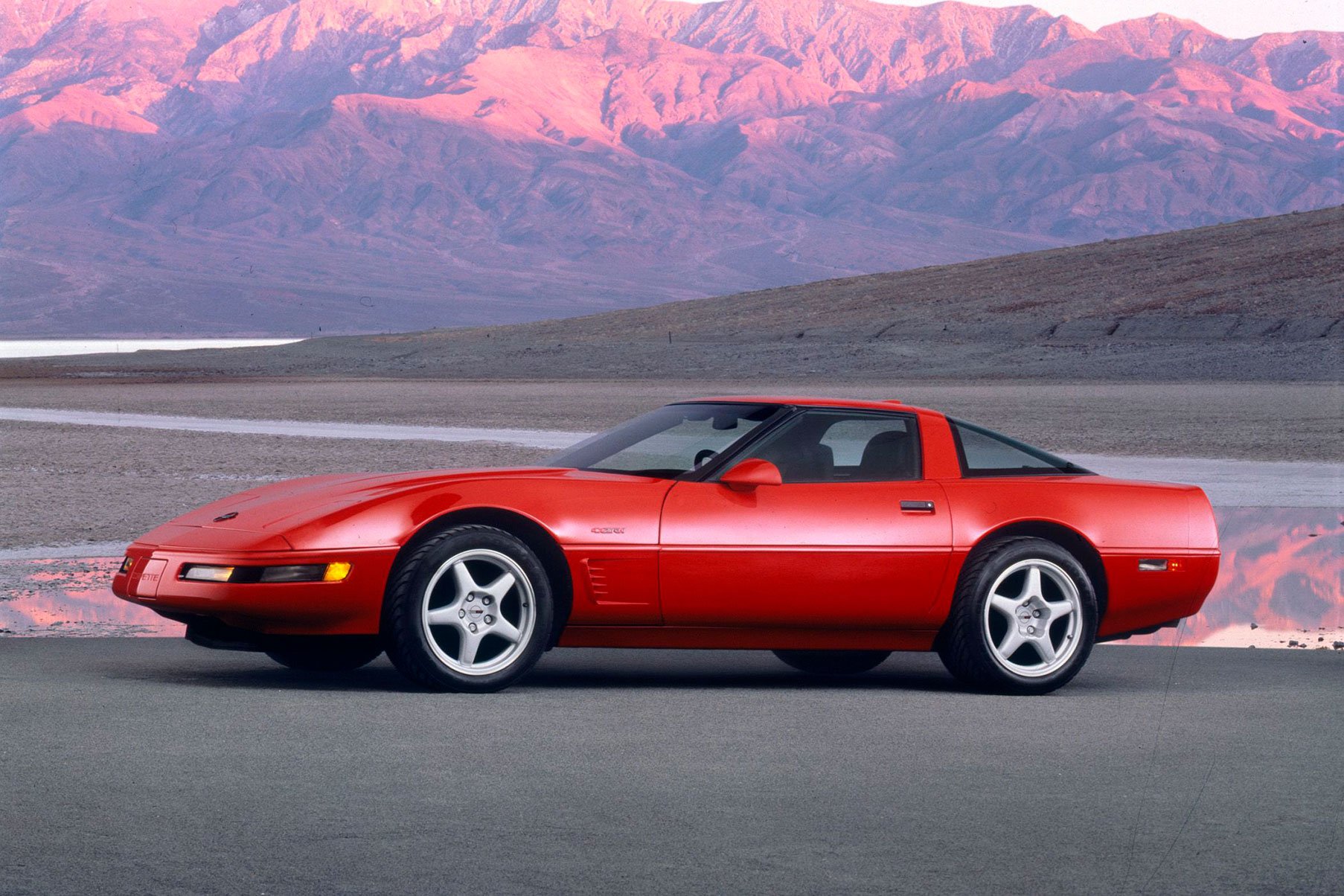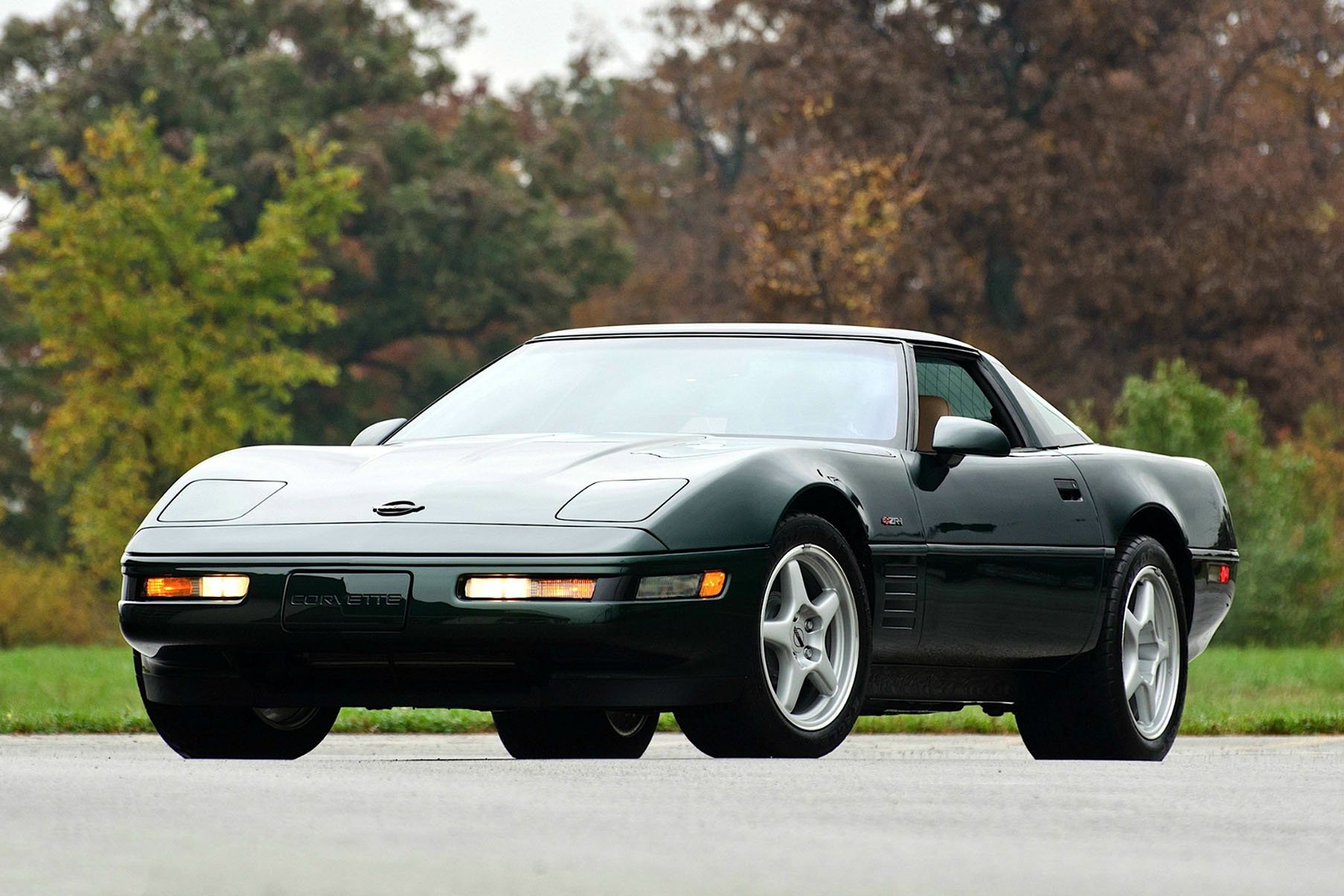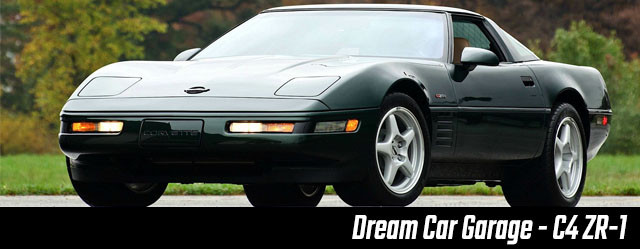 In terms of factory production cars, the 1980s was a fairly abysmal era for high performance. Still reeling from the emissions regulations and fuel economy standards that began in the early 1970s, the industry had pivoted to fuel sipping economy cars and pared down personal luxury coupes. For high performance models like the Corvette it was a particularly harrowing time, and high output motors like the 435 horsepower, 427 cubic inch L71 V8 were relics of the past.
In terms of factory production cars, the 1980s was a fairly abysmal era for high performance. Still reeling from the emissions regulations and fuel economy standards that began in the early 1970s, the industry had pivoted to fuel sipping economy cars and pared down personal luxury coupes. For high performance models like the Corvette it was a particularly harrowing time, and high output motors like the 435 horsepower, 427 cubic inch L71 V8 were relics of the past.
But things began to look up with the introduction of the all-new fourth generation Corvette in 1984. Although its 350ci L83 still only made 200 horsepower, the C4 Corvette was a technological powerhouse in its day, boasting new bodywork made from lightweight molded polymers, a brand new modern chassis with a light weight and fully independent suspension system, an eye-catching LCD instrument panel display, and various other improvements throughout.
The C4 Corvette proved to be a massive departure from the third generation car it replaced, emphasizing the public's newfound interest in high-tech hardware and design. Along with the new streamlined bodywork, the Corvette's interior was a clean-sheet approach that featured an LCD instrument panel that, although somewhat dated looking by today's standards, was a welcome departure from the traditional gauge clusters used at the time. Images: GM
With engineers still struggling to solve the power output issue, the new focus for the Corvette had become handling and design, resulting in a thoroughly capable platform that was ripe for additional grunt down the line.
A few years after the introduction of the C4 Corvette, General Motors acquired Lotus, a relatively small English high performance firm known for their long history in motorsport and limited-production, road going sports cars. In 1986, the brass from Chevrolet’s Corvette division came to Lotus engineers with an ambitious proposal, asking them to help the Chevy engineers design and build the world’s fastest production car using the C4 Corvette as the platform.
The result was the “King of the Hill” C4 Corvette ZR-1, a model which differed little from the standard Corvette aesthetically, but underneath the bodywork was an absolutely world-class sports car that put the world’s most exotic hardware on notice.
Doing the ZR-1 Badge Justice
The ZR-1 moniker had first become part of Corvette nomenclature in 1971. Chevrolet had taken the all-new LT-1 small block V8 screamer and dropped it into a very limited production C3 Corvette that was essentially a road racer with a license plate.
Outfitted with a close-ratio four speed manual gearbox, heavy duty suspension and brakes, upgraded cooling systems, and devoid of extraneous content, although the ZR-1 looked very much like a garden-variety small block Corvette, its formidable capability on-track proved otherwise. Chevrolet produced a grand total of 53 C3 Corvette ZR-1s and created a sought-after legend in the process.
The company knew that if they were going to revive such a revered model they’d need to bring their A game to the table, and while their joint effort with Lotus was a comprehensive performance package, the motor was arguably the centerpiece of the ZR-1’s hair-raising performance prowess.
Rather than extensively modifying the standard 350ci motor that powered the C4 Corvette at the time, Lotus engineers promptly ditched the tune-port injected, 240 horsepower L98 V8 and began work on an all-new motor that would power the ZR-1.
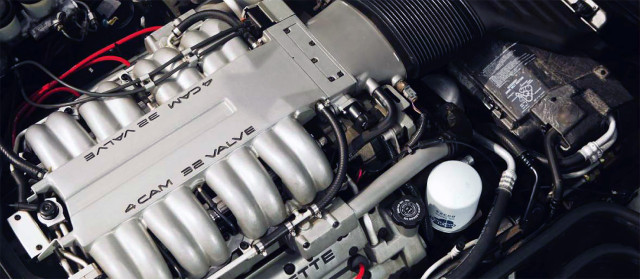
Aside from identical bore centers, the design of the Lotus-developed LT5 shared virtually nothing with the standard L98 V8 motor. Dave McLellan, Corvette Chief Engineer at the time, told journalists that he preferred the ZR-1 not be referred to as “exotic” because that implied a temperamental nature. While the LT5 was substantially more sophisticated than any production motor used previously in the Corvette, a great amount of effort was made to keep the ZR-1’s behavior civilized. Image: GM
The result of their labors was the new LT5 engine. A far cry from the cam-in-block pushrod design of the L98, this new aluminum block, 32 valve motor featured four overhead camshafts and a unique air management system that could shut off some of the motor’s intake runners and fuel injectors during low throttle operation to allow the motor to remain in compliance with government fuel economy standards while delivering a then-unheard of 375 horsepower and 370 pound-feet of torque.
The LT5’s design differed so dramatically from the L98’s that Chevrolet would outsource the assembly of the motor to Mercury Marine in Stillwater, Oklahoma, who would then ship the motors to GM’s Bowling Green, Kentucky factory for installation in the car.
But neither Lotus nor Chevrolet was interested in simply turning the Corvette into a knuckle-dragging muscle car – they wanted the ZR-1 to handle as well. To that end, the team developed not only new braking and steering systems unique to the ZR-1, but a new adjustable active suspension system as well.
Dubbed FX3, this new system was developed with Bilstein (who had already done the initial tooling for the system years prior for the Porsche 959 supercar) to provide the ZR-1 with an adaptive damping system that could alter the suspension’s ride characteristics on the fly by a selector switch on the cabin’s center console.
Like the C3 ZR-1, upon its debut the C4 ZR-1's aesthetic changes versus the standard Corvette were fairly subtle upon its debut in 1990, though the C4 lineups adoption of the ZR-1's convex rear fascia the following year likely ushered in the additional stylistic flourishes applied to the ZR-1 for 1991. Images: GM
Like the original ZR-1 the C4 model was difficult to distinguish from a standard Corvette, but subtle visual differences set the car apart upon closer inspection. These new supercars were three inches wider in the rear than garden-variety models, mainly in order to accommodate the new wider rear wheels and tires that were required to provide the substantially more powerful ZR-1 with adequate grip.
The center-mounted tail light was also relocated from between the two sets of taillights to the top of the rear hatch glass, and the rear fascia featured a convex shape rather than the standard C4’s concave rear.
But for those who weren’t able to spot a ZR-1 at glance, the fact that this Corvette was something special became immediately obvious when observing either its performance or its window sticker. Retailing for $58,995 upon its debut in 1990, or about twice that of a standard Corvette, the ZR-1 justified its astronomical sticker price with equally astronomical performance figures.
With a 0-60 mph sprint in 4.4 seconds on its way to a top speed of over 180 miles per hour, the ZR-1 would go on to set no less than seven FIA-verified high-speed endurance world records at a test track in Fort Stockton, Texas on March 1st, 1990.
Although its high cost would keep the ZR-1 out of most Corvette buyers’ garages, the impressive performance it offered kept the in production for six years.
The 1991 model year would bring updates to the body work and interior, along with a new unique set of wheels for the ZR-1, which were likely added to the mix due to the fact that the rear convex fascia that set the 1990 ZR-1 apart from the base model car had found its way to all Corvette models.
By 1991 the ZR-1 had become more immediately recognizable from a standard Corvette due to the new unique five-spoke wheels it was equipped with. Images: GM
Lotus engineers gave the power plant some revision for 1993, in turn bumping the horsepower up from 375 to 405. Production could continue in a fairly limited capacity until the end of the 1995 model year, with a total of 6,939 C4 Corvette ZR-1s built throughout its six-year production run.
C6 Return
Chevrolet brought the ZR-1 moniker back into the fray once again for the 2009 model year with the C6 Corvette ZR-1. In something of a break from ZR-1 tradition, the C6 ZR-1 was more visually overt versus the standard Corvette compared to previous generation ZR-1 models, boasting a unique body kit, wheels, and a hood with a clear center section that allowed onlookers to see the supercharger installed upon the 638 horsepower, 6.2-liter LS9 engine.
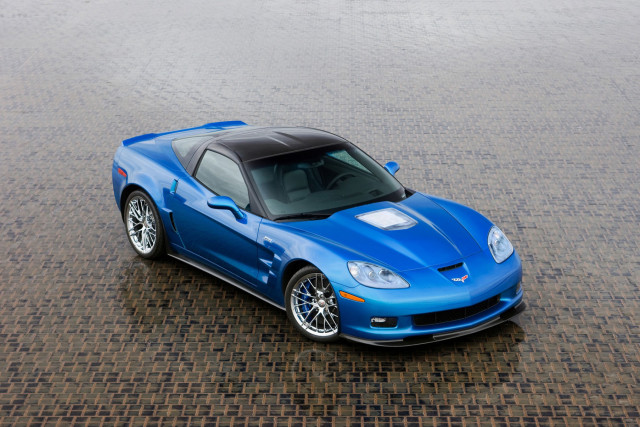
The C6 Corvette ZR-1 continued the tradition of world-beating performance at a relative bargain versus its exotic competition, beating out cars like the Porsche Carrera GT and Pagani Zonda F Clubsport for the production car lap record at the Nurburgring in 2008. Images: GM
But like the previous ZR-1 models, the C6 proved to be a world class sports car, briefly capturing the production car lap record around Germany’s famous Nurburgring road course in 2008.
While Chevrolet has officially stated that they have no plans to offer a ZR-1 for the seventh generation Corvette, recent rumors and spy photos from GM’s proving grounds seem to suggest otherwise.
However, whether or not any Corvette models slotted above the current range-topping Z06 would be named ZR-1 remains speculation, and only time will tell how the ZR-1 model might evolve in the future.



